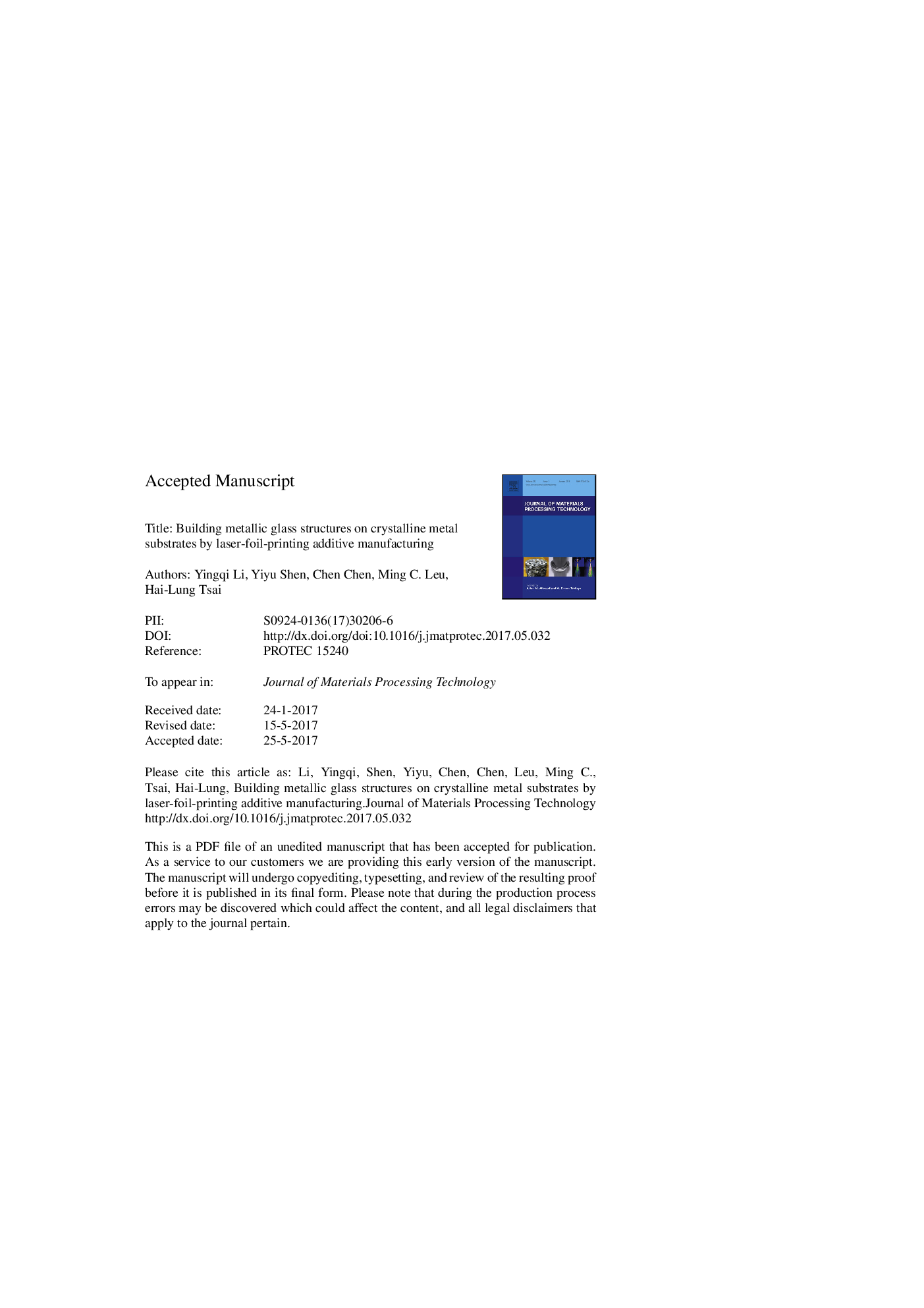| Article ID | Journal | Published Year | Pages | File Type |
|---|---|---|---|---|
| 5018002 | Journal of Materials Processing Technology | 2017 | 35 Pages |
Abstract
In laser-foil-printing additive manufacturing, 3D metallic glass structures can be built by laser welding of amorphous foils, layer by layer, upon a crystalline metal substrate. In this paper, weldability studies for laser welding of Zr52.5Ti5Al10Ni14.6Cu17.9 amorphous foils onto a Ti-6Al-4V (Ti 6-4) or Zr 702 substrate are conducted. After laser welding, the weldments are analyzed using X-ray diffractometer, optical microscope, scanning electron microscope equipped with energy dispersive spectroscopy and micro-hardness tester. The results show that Zr 702 is a suitable substrate for Zr-based metallic glass structure since crack-free weld joints can be obtained owing to the formation of ductile α-Zr, while Ti 6-4 is not an appropriate substrate since it has high cracking susceptibility due to the formation of a large amount of hard and brittle intermetallics near the foil-substrate interface. It was found that the mixing between melted substrate and foil is not uniform but exhibits a distinct “swirl” pattern. The swirl structure is more pronounced in Ti 6-4 than in Zr 702 substrate which may contribute to its high cracking susceptibility. The aforementioned mixing leads to partial crystallization of the first amorphous layer; however, fully amorphous is achieved in the additional welding layers.
Related Topics
Physical Sciences and Engineering
Engineering
Industrial and Manufacturing Engineering
Authors
Yingqi Li, Yiyu Shen, Chen Chen, Ming C. Leu, Hai-Lung Tsai,
